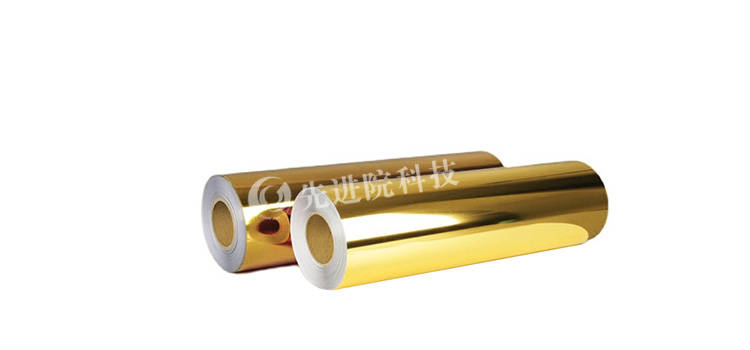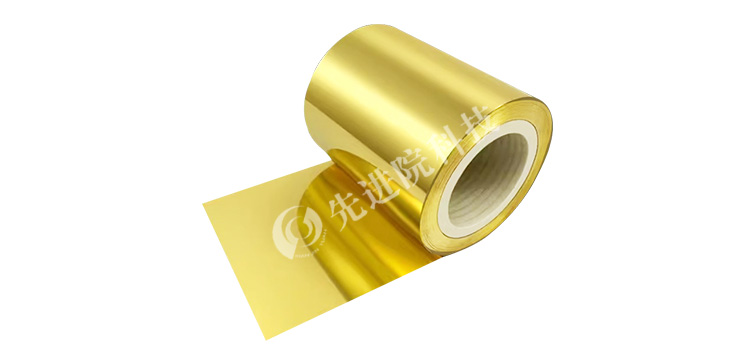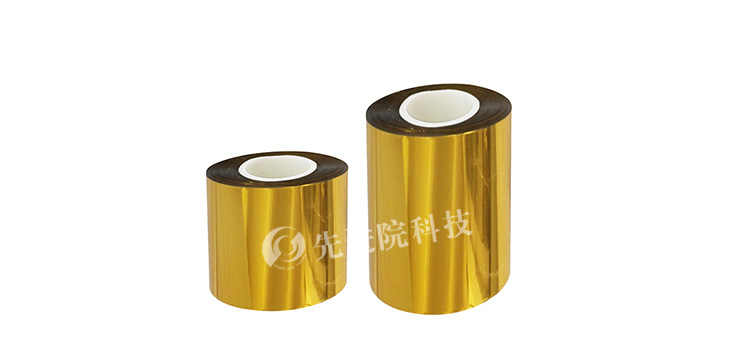PET gold plating film has been widely used in various fields such as electronics, optics, and decoration due to its unique properties. Ensuring high-quality output of PET gold-plated film is crucial for the final performance and market competitiveness of the product. Advanced Institute (Shenzhen) Technology Co., Ltd. has strong research and development capabilities in material testing technology
PET gold-plated filmQuality inspection provides a series of advanced methods and technical support.
1、 Appearance inspection
- visual inspection
In the initial stage of the manufacturing process, manual visual inspection is a fundamental and effective method. The operator needs to carefully observe whether there are obvious defects on the surface of the PET gold plating film, such as scratches, bubbles, pinholes, wrinkles, etc., under sufficient lighting conditions. Advanced research has found that even small scratches can affect the electrical and corrosion resistance of PET gold plating films in subsequent use. Through strict visual inspection standards, products with serious appearance defects can be detected and eliminated in a timely manner, avoiding them from entering subsequent processing stages and thus reducing production costs.
- Optical microscope observation
For some subtle defects that are difficult to detect with the naked eye, optical microscopes can play an important role. Researchers from the Advanced Institute used an optical microscope to observe PET gold plating films at high magnification, allowing for clear visualization of the microstructure of the film surface. For example, it can detect whether the particle size of the gold layer is uniform, and whether there is agglomeration of small particles caused by impurities in the plating solution or process problems. Uneven distribution of gold layer particles may affect the glossiness and consistency of the gold plating film.

2、 Thickness detection
- X-ray Fluorescence Spectroscopy (XRF)
accurate measurement
PET gold-plated filmThe thickness of the gold layer is one of the key indicators for evaluating its quality. The Advanced Institute adopts X-ray fluorescence spectroscopy to achieve this goal. When X-rays are irradiated onto the surface of PET gold plating film, the gold element emits fluorescent X-rays of specific energy. By detecting the intensity of fluorescent X-rays and combining it with the corresponding calibration curve, the thickness of the gold layer can be accurately calculated. This method has the advantages of non-destructive, fast detection speed, and high accuracy, which can meet the online detection needs in large-scale production processes. Ensuring that the thickness of the gold layer meets the standard requirements is crucial for ensuring the conductivity, corrosion resistance, and decorative properties of PET gold plating film.
- Eddy current thickness measurement method
For some scenarios that are not suitable for XRF detection, such as situations where rapid and continuous detection is required on the production line, eddy current thickness measurement method is an effective choice. This method is based on the principle of electromagnetic induction. When a probe with an alternating magnetic field approaches the PET gold plating film, induced eddy currents are generated in the gold layer, and the magnetic field generated by the eddy currents will react on the probe, causing changes in the probe parameters. By measuring this change, the thickness of the gold layer can be calculated. Researchers from the Advanced Institute have optimized the eddy current thickness measurement equipment, improving its detection accuracy and stability, enabling it to accurately detect the thickness of PET gold plating film in complex production environments.

3、 Adhesion testing
- Tape test
A simple and commonly used tape test can be used to evaluate the adhesion between the gold layer of PET gold-plated film and the PET substrate. During the manufacturing process, a specific adhesive tape is tightly attached to the surface of the gold-plated film and then quickly peeled off. The Advanced Institute has developed detailed tape testing and rating standards based on a large amount of experimental data. By observing whether the gold layer is peeled off with the tape and the degree of peeling, the strength of adhesion can be determined. Insufficient adhesion may lead to the problem of gold layer detachment during subsequent use, seriously affecting product quality.
- Scratch test
Using specialized scratch testing equipment, in
PET gold-plated filmScratch the surface with a certain pressure and speed, and observe the peeling of the gold layer at the scratch. The scratch testing equipment developed by the advanced institute can accurately control the pressure of the scratch needle and the length of the scratch. By analyzing the degree of damage to the gold layer at the scratch under different pressures, the adhesion performance between the gold layer and the PET substrate can be comprehensively evaluated. Good adhesion is an important factor in ensuring the long-term stable use of PET gold-plated film under various environmental conditions.

4、 Electrical performance testing
- resistance measurement
The electrical properties of PET gold plating film applied in the electronic field are crucial. The Advanced Institute uses the four probe method to measure the surface resistance of gold-plated films. This method can eliminate the influence of contact resistance during the measurement process and accurately measure the resistance value of the gold layer. By monitoring the changes in resistance values, it is possible to determine whether there are defects such as fractures and voids in the gold layer that affect its conductivity. A low and stable resistance value is the basis for ensuring the normal transmission of current in electronic circuits with PET gold plating film.
- Conductivity uniformity test
In addition to measuring overall resistance, testing
PET gold-plated filmThe uniformity of conductivity is also crucial. The Advanced Institute evaluates the uniformity of conductivity by conducting multi-point resistance measurements at different positions on the surface of the gold-plated film and analyzing the distribution of resistance values. If there are problems such as uneven thickness or impurity accumulation in the gold layer, it can lead to uneven conductivity and affect the performance stability of electronic products. Through rigorous conductivity uniformity testing, the reliability of PET gold plating film in electronic applications can be ensured.
Advanced Institute (Shenzhen) Technology Co., Ltd. comprehensively covers the quality inspection points in the manufacturing process of PET gold-plated film from appearance to performance through the comprehensive use of various testing methods mentioned above, providing solid technical support for the production of high-quality PET gold-plated film and promoting the development and progress of related industries.
The above data is for reference only, and specific performance may vary due to production processes and product specifications.







